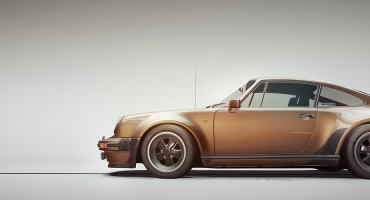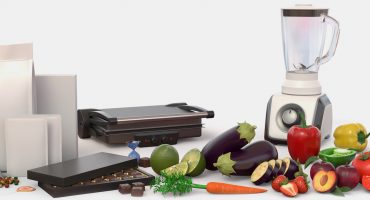Background
I started 3D modelling as a teenager modding video games in the late 90s, early 2000s. Following high school I went to University and in 2007 gained a degree in 3D Computer Animation with the hopes to have a career in the games industry. Scotland, the country that I live in, has a thriving games industry. After University I got a job as a games tester hoping that would be my way in and move on to be a 3D artist. Unfortunately, that was not the case. After working many years as a tester, I have begun to retrain myself in 3D modelling and am learning current industry standard techniques so I can switch careers and become a professional 3D artist as I dreamed of originally.
Competitions
Just over a year ago I started to learn Blender using tutorials online and began entering competitions and participating in collaboration projects. I find that having a clear goal and time limit helps to keep focused on one thing and not spend too long on any one project, which in turn helps you learn faster. Sketchfab holds many competitions focusing on different disciplines. I have managed to win a couple of competitions here on Sketchfab and would recommend to learners and professionals alike to try entering one.
This is the first one I won; the task was to create a fantasy vending machine. I chose to create a pretty inconspicuous looking vending machine, that held typically spy themed items that would be somewhat ridiculous to find in a vending machine.
https://skfb.ly/6yJPI
Although that’s not the competition I would like to talk about. Most recently I won a competition to create a furniture pack for the store, and I would like to talk a little about the thought process that I go through creating such a pack.
Furniture Pack
https://skfb.ly/6A9nR
I only became aware of the competition 4 days before the competition came to a close. As I have a love for Mid Century style furniture that seemed to be the obvious choice for a furniture pack, but I had to plan my time efficiently. I split my time into one day of research, two days of modelling, and one day of texture.
I started my research by creating a list of typical home furnishings, sofas, chairs, tables, etc. I quickly decided that kitchen and bathroom items were going to be too generic. I spent the day scrolling through Google, Pinterest, vintage furniture sellers and other websites for attractive interesting and sometimes unusual items of 60’s and 70s furniture. By the end of my research I had a collection of images for 30 items for living room, bedroom and dining room furniture. There was no way to model that many items in the time I had. I chose to focus on living room furniture which left me with 15 items typical of 60s furniture.
During modelling and texturing I wanted to keep a consistent style between furniture. I achieved this in several ways.
- Keeping the poly counts similar between items.
- Making sure the poly count is low enough to use in real time environments like video games.
- Changing the objects to have similar features such as the legs that the chairs and TV share.
- Using the same materials across all the items like wood, metal, fabric, etc.
- Sticking to a colour pallet.
I wanted to present the furniture pack in an eye pleasing way that would stand out. I experimented with different ways of displaying furniture from lining them up, having them in a grid, as well as having them in a circle. I settled on displaying them in a mock scene that you might find in a furniture store like IKEA and placed them in a small room open on 3 sides. Using the 3 placeable lights in the lighting area of the scene editor I gave the appearance that some of the lamps were lit, the largest one casting shadows around the room.
After completing my model I went on to convert the models to FBX and OBJ formats as they are the most commonly used formats and included a set up blender scene with lights and materials applied. I want to give the customer as many formats as possible to make sure using the model is as painless as possible for them.
General Tips
There are a few things that I like to do across all my 3D models when I set them up for selling.
1. Background
Having a consistent colour or watermarked image as your background you will make your page look clean and your items recognisable.
2. Post Processing
When selling a standalone item, I try not to use anything that will be too distracting or hamper the customer from seeing what they are purchasing. I tend to mostly use Sharpness, SSAO
3. Annotations
If you have details that you want to highlight, annotations are a great way to give the customer a guided tour of the product. You can also put in important information on the model such as poly counts, as customers may not always read the descriptions straight away.
4. Lighting
Typically, I will only use one HDR across all the items that I am selling. I find that the best default HDR for a nice clean and realistic lighting is the industrial room. If you have a pro account you can always add your own.
5. VR
A lot of people view models in VR so it’s always a good idea to make sure you set up the VR view to the correct scale and make it as easy as possible to view. For example, if it is a small object it’s best not to have it placed at their feet, make sure it’s to scale and about table height in front of them.
6. Pricing
Have a look at what similar models at a similar quality are priced at, as if you price too low the customer may think that your item is of lower quality than others, and you don’t want to undercut your fellow sellers. On the flip side you don’t want to make it overpriced and miss out on sales.
https://skfb.ly/6zAYG
Sketchfab
Sketchfab has been a one stop shop for me to show of my own work, learn from other artists, put my skills to the test by competing in friendly competitions and have the ability to sell items. It’s my favourite place to display my artwork and has become part of my workflow rather than an afterthought. Now when I create something I’m always thinking “How can I make this look best on Sketchfab”.





